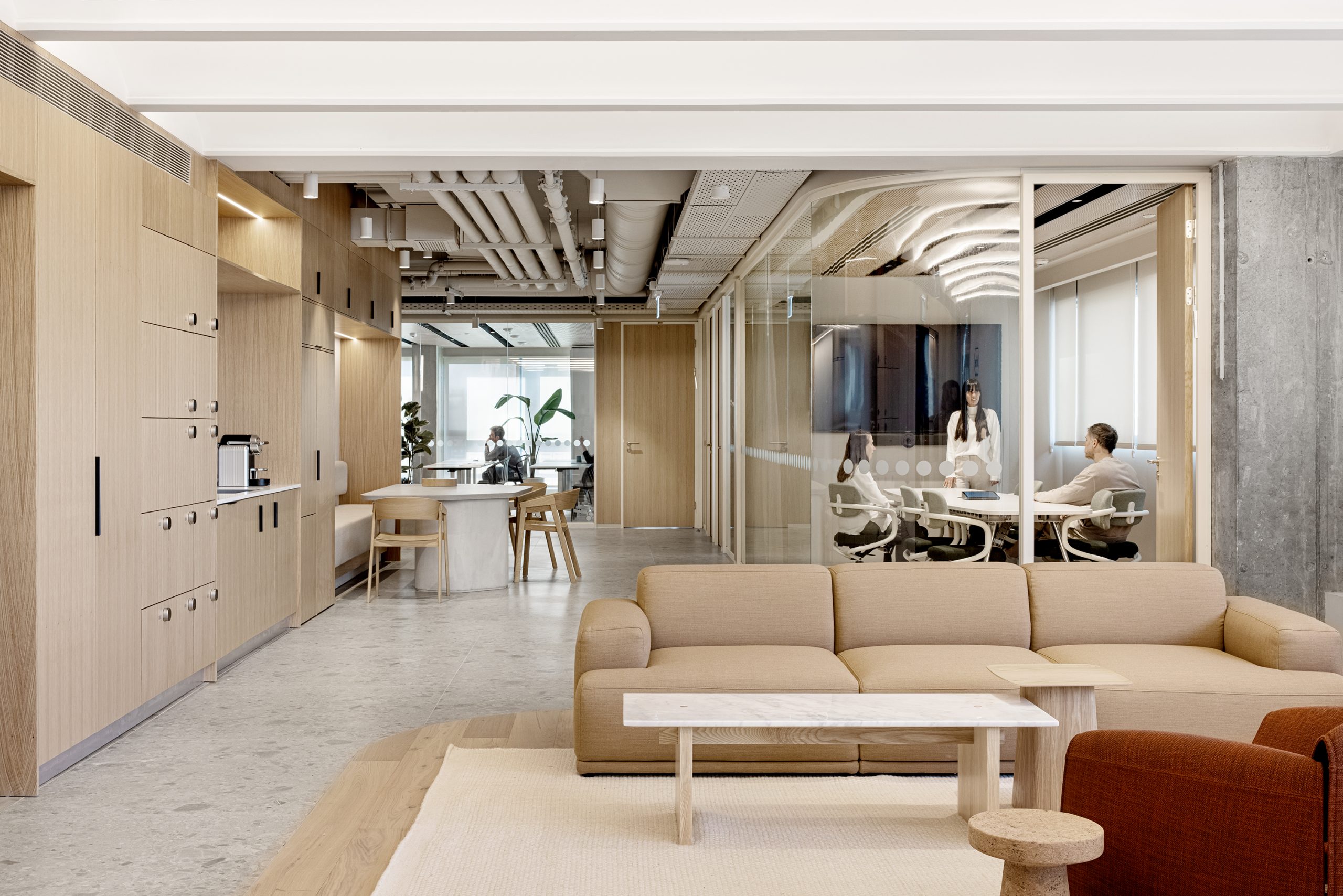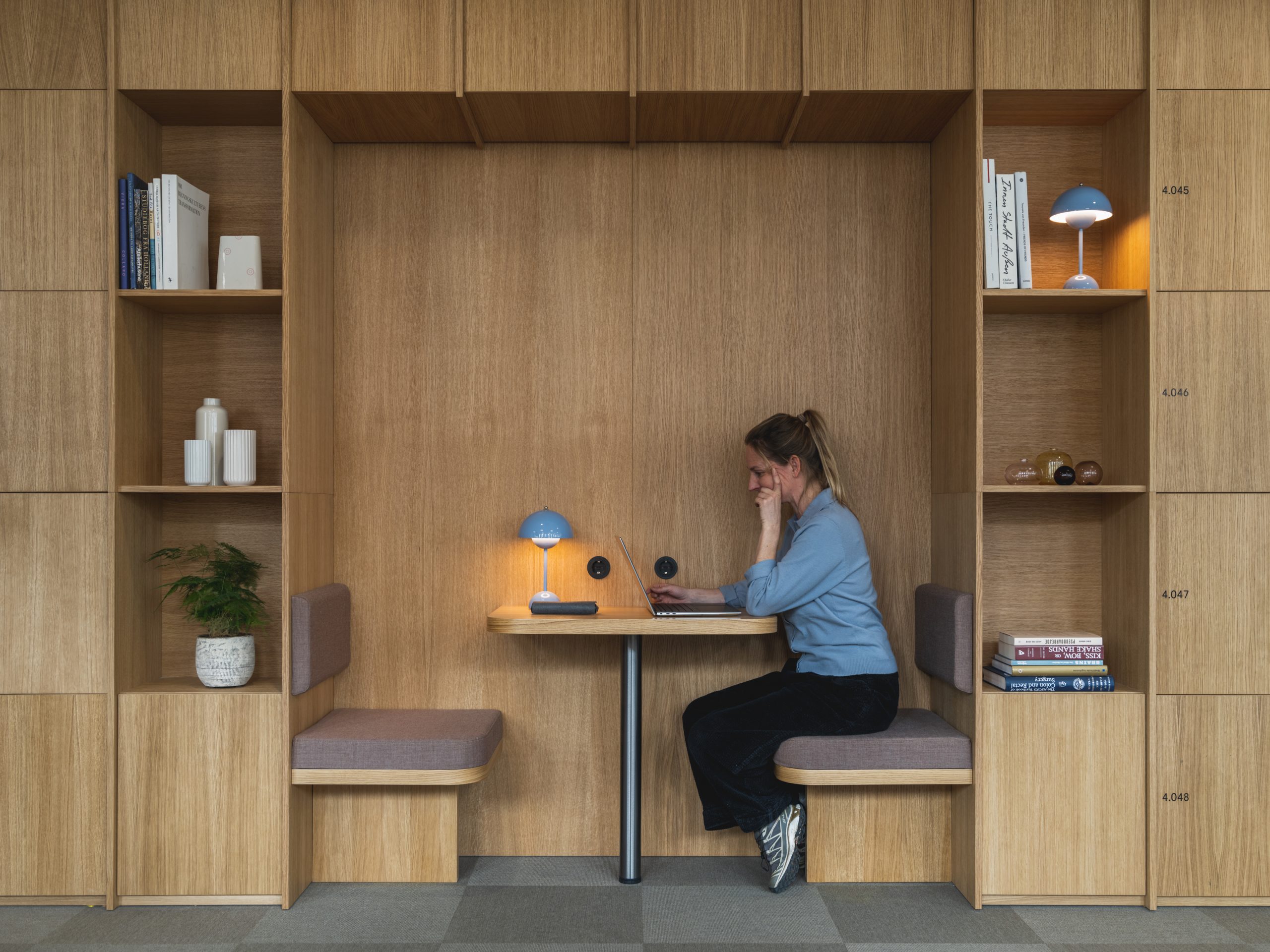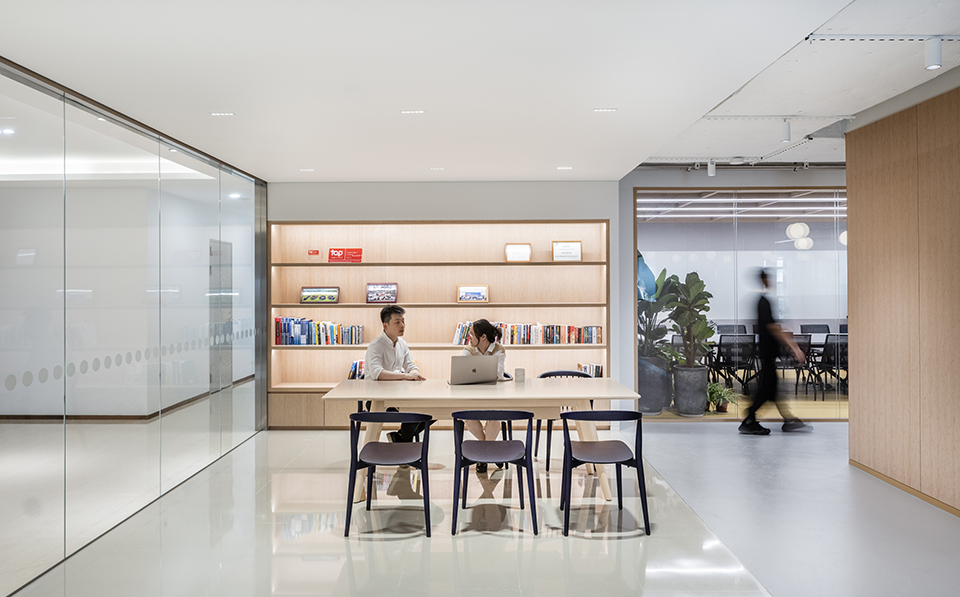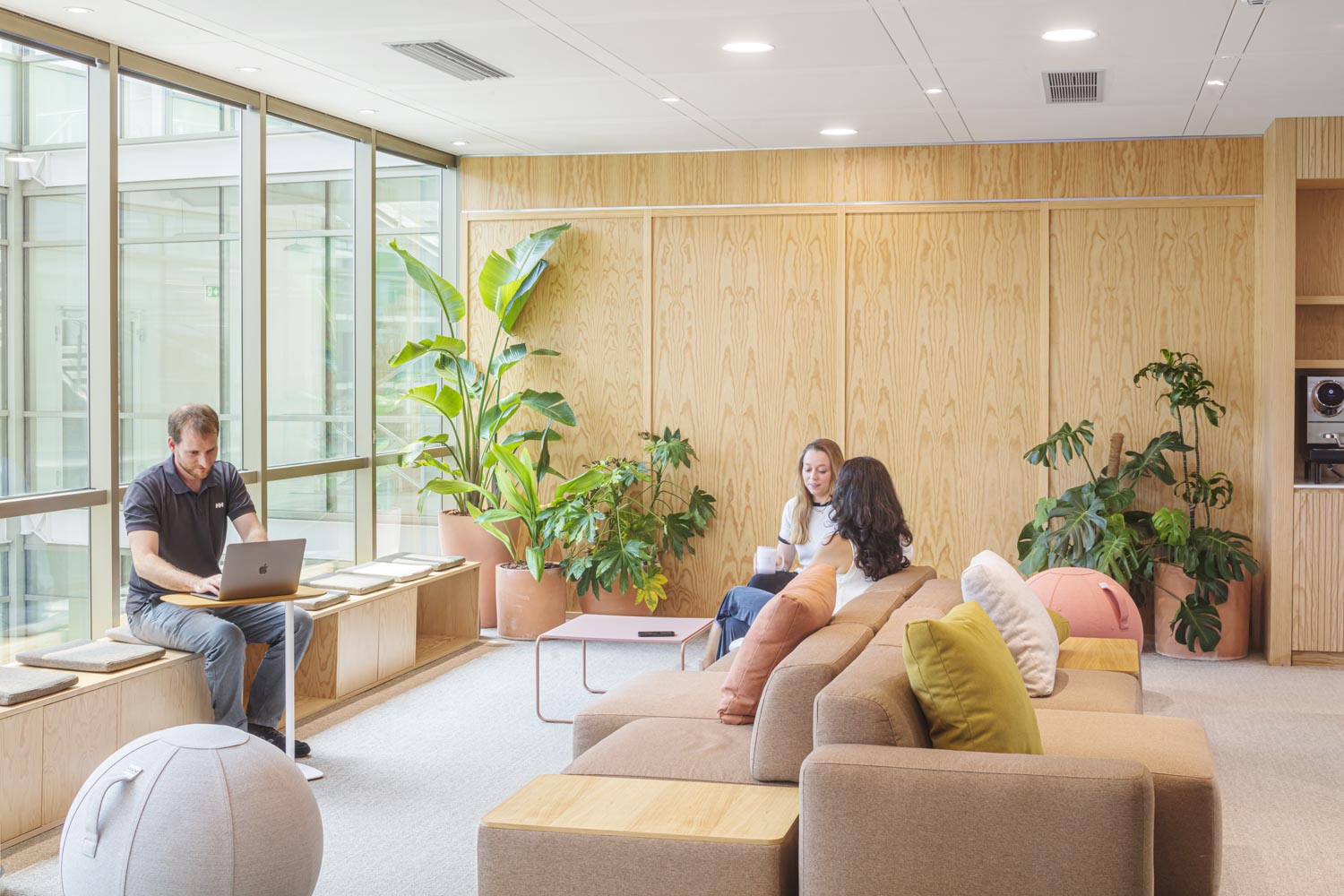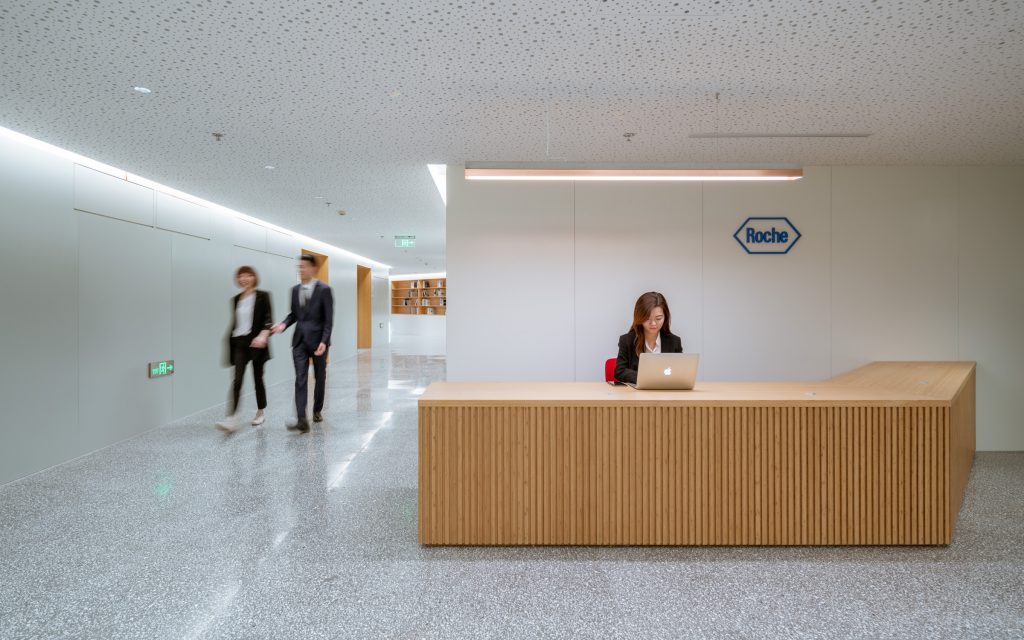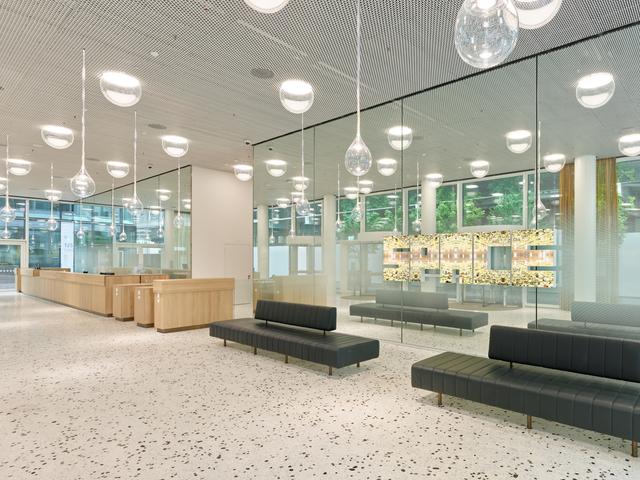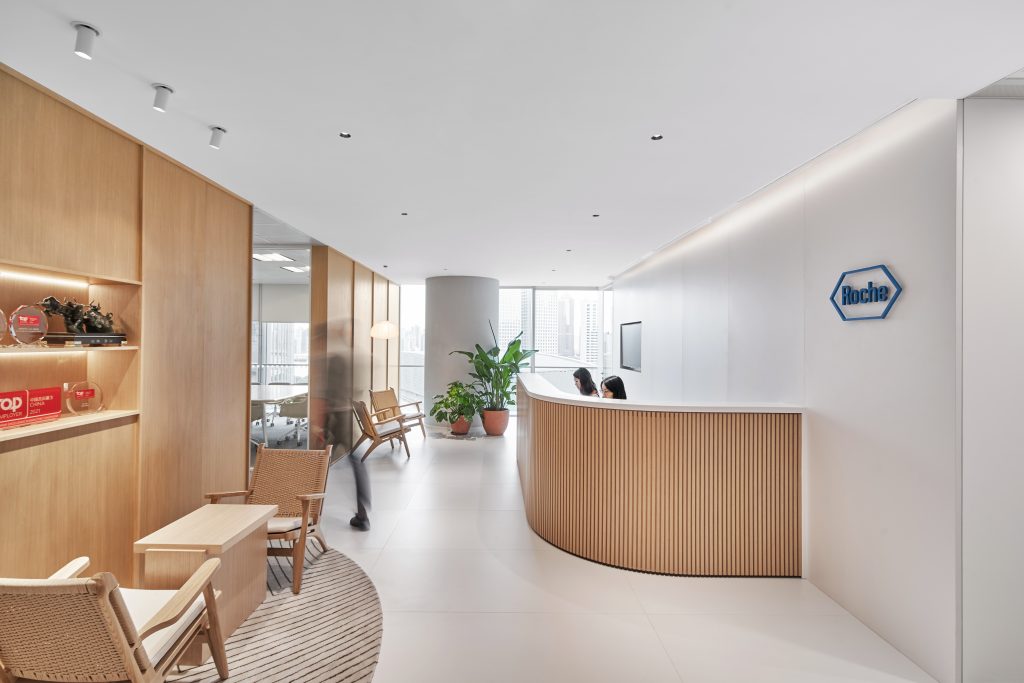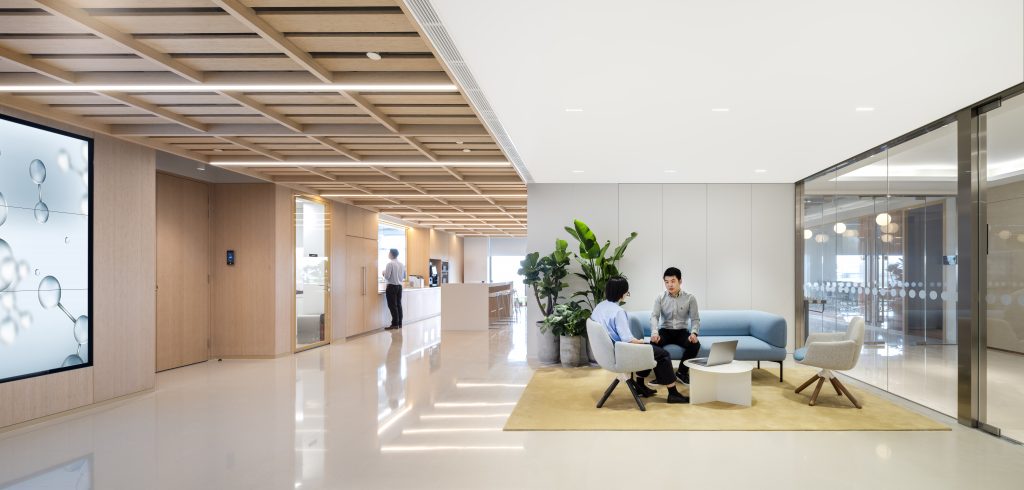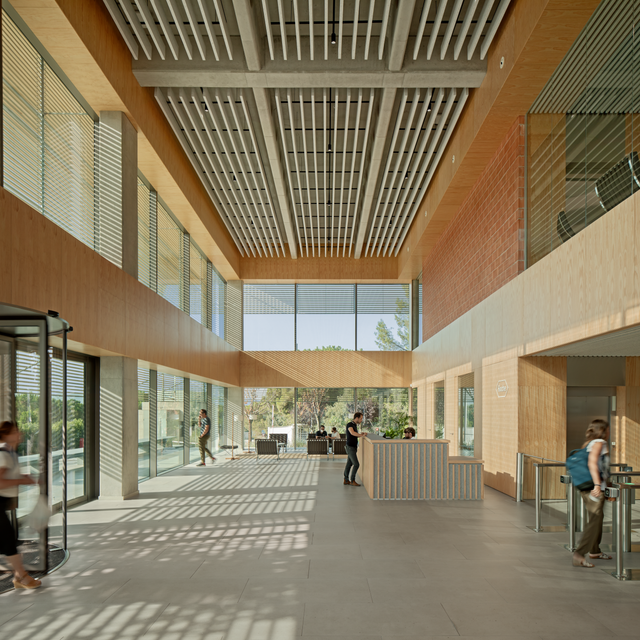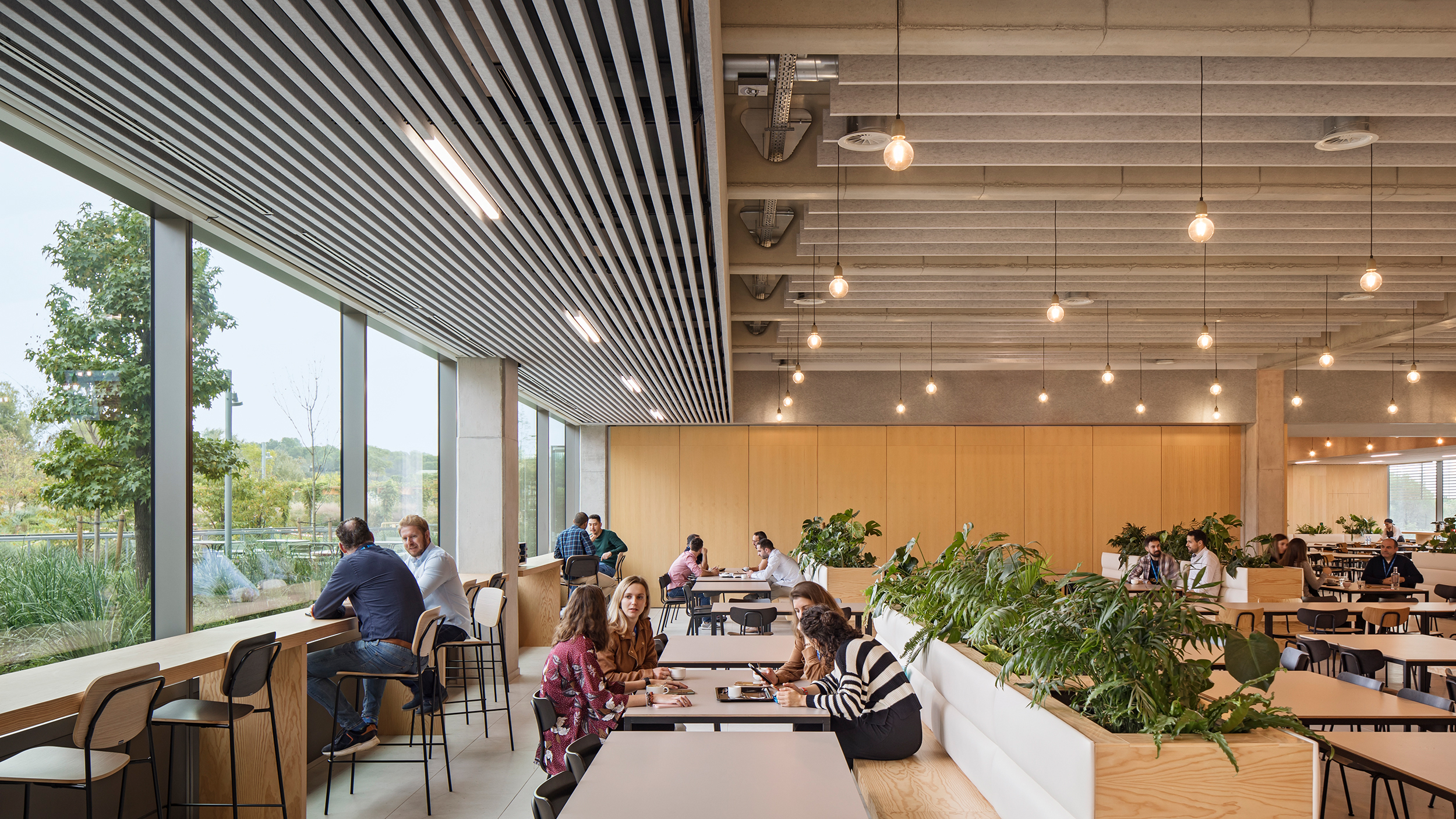
Creating atmospheres
Working with light to transform our perception of space is critical to achieve a psychologically comforting environment.
Light has not just intensity, but also a vibration, which is capable of roughening a smooth material, of giving a three-dimensional quality to a flat surface.Renzo Piano - Architect
Lighting performance for beneficial effects
New forms of regenerative light are being recognised for their beneficial effects on the body and mind. Spaces with natural light and dynamic adaptable artificial lighting improve the function of our circadian rhythm, which can increase our happiness, energy levels and productivity. It is important to design an appropriate combination of daylight and artificial light, together with a balanced use of indirect and direct lighting.
Artificial lighting is used to define spaces according to their purpose. It should be installed only where it is needed, have a balanced intensity, and minimize glare and reflection. LED technology is our standard, following K-18 Roche Group Directives, with a goal of incorporating innovative lighting solutions for a cost-effective and energy-conscious scheme.
Smart lighting control systems can regulate the intensity and colour temperature of light, mimic outdoor lighting conditions, allow individual control, and drive energy savings.
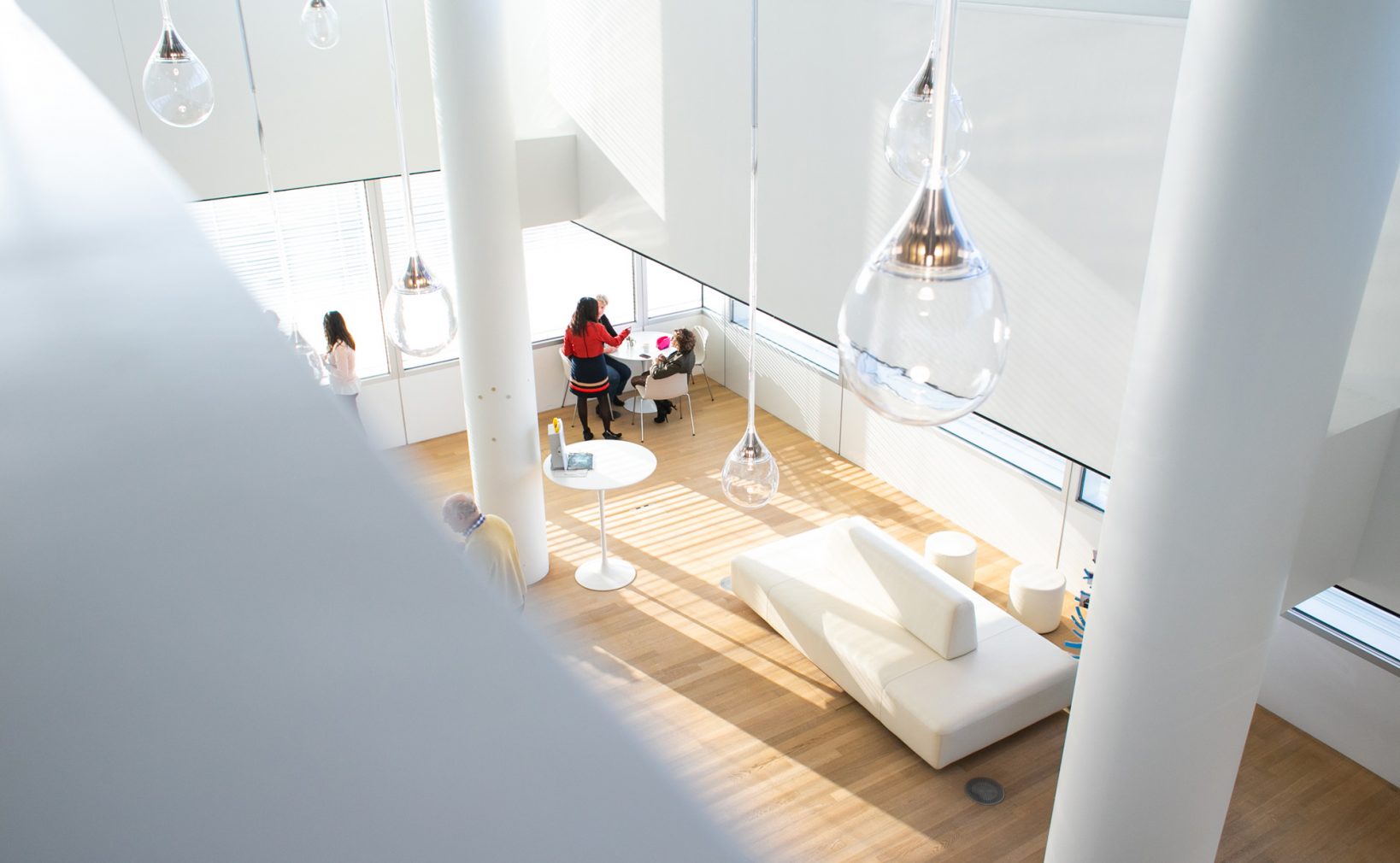
Essential lighting, where to start
At the beginning of each project, lighting designers should ask the following questions for each required functional area:
- Why do we illuminate and what can light achieve?
- What architectural, or functional significance does the room or zone have?
- Which tasks can be supported via lighting to optimise the use of the room?
- What is the ideal lighting strategy and individual solutions?
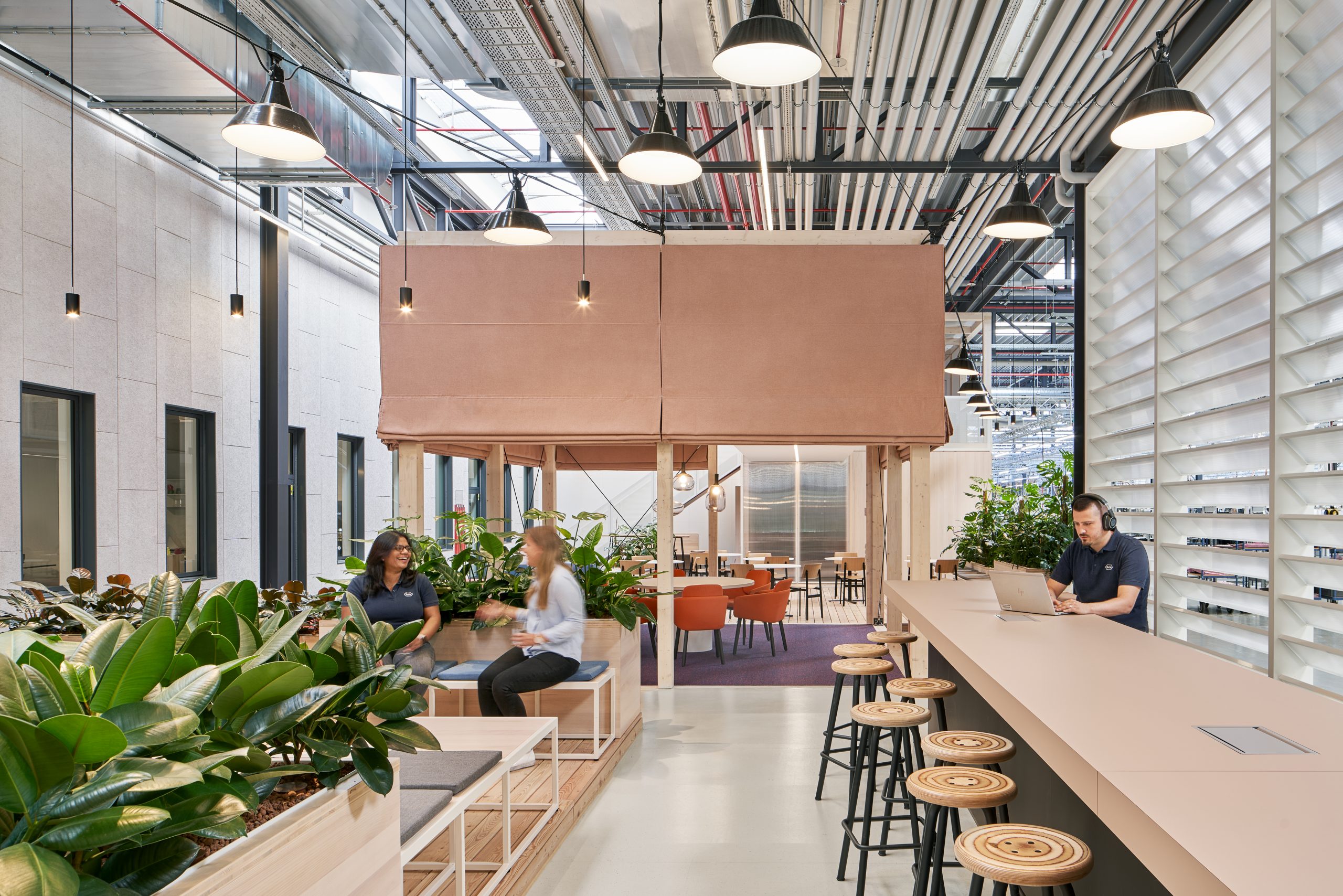
The basics about lighting
There are two basic properties of light to be considered in any lighting project, which are responsible for the perception of the colour of the light, and key to the final ambience or character of a space: Colour Temperature and Chromatic Rendering Index (CRI). These properties create quality and mood, and can completely change the way we see and feel a space.
- Colour Temperature changes the ambience of a space by defining the colour of the light in range from warm to cold. It is key to consider if the space has natural light, the colour of the materials and the functional requirements to decide what kind of atmosphere should be most appropriate.
- The Chromatic Rendering Index. is a quantitative measure of the ability of a light source to reveal colours faithfully. This is critical for spaces with high visual quality requirements like laboratories but also where food is displayed. It should be >95 for main spaces (according to the TM-30 method: Rf >90 -100, Rg >90-100) and >80 for secondary spaces.
The right lighting for the right space
It is important to create differentiation in character between spaces; avoid the one-solution-fits-all approach. When choosing lighting color temperature, consider the amount of natural light, function, and finish colours in a space. Using dynamic circadian lighting – tunable white, is a way to adapt light color temperature to the appropriate setting and time of day, strengthening the biologic human rhythm, reducing mental load and optimizing perception.
Typical recommendations for color temperatures
Ideal case: introduce tunable white – a gradual transition between two color temperature settings, from cool ( day time, 4000K) to warm (evening, 3000K)
- Prioratize tunable white in primary work spaces.
- Use warm color for social and amenity spaces (3000K)
- Use neutral color for secondary spaces and technical facilities (4000K)
Alternative case: monocolor systems
- Use neutral color for primary work spaces (4000K)
- Use warm color for social and amenity spaces (3000K)
- Use neutral color for secondary spaces and technical facilities (4000K)
General lighting
Creating optimal lighting requires a balanced use of light sources and materials/colours. General lighting should provide a neutral, uniform illumination to the entire space, with accent light enhancing space perception, adding comfort and character.
- All spaces should guarantee good visual quality.
- Use different light intensities in the space to avoid monotony and create highlights.
- Plan a rational lighting layout according to the rhythm of the building’s structure.
- Luminaires should be the same colour as the ceiling or visually integrated with it.
- Avoid direct visibility into the light source by using luminaires with glare control – reflector optic; fixtures should have Unified Glare Rating of <19.
- General lighting systems, such as mobile lights on tracks and adjustable downlights, are advisable, as they help achieve visual comfort and task performance in response to each user’s needs within flexible spaces.
Illustration of Light Levels during evening/night time, which must be achieved through artificial lighting.
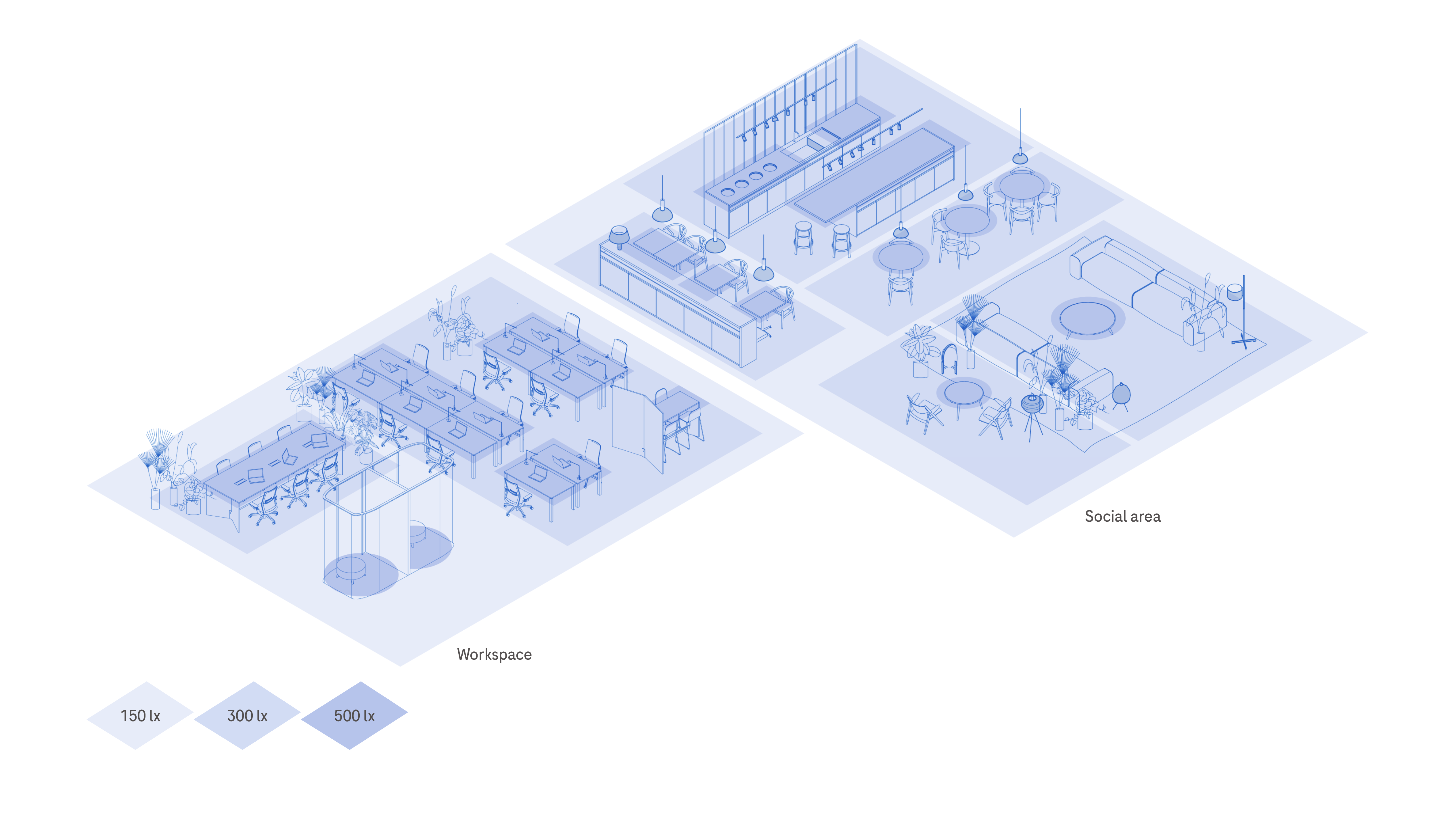
Light Intensity
- Recommended light levels are determined according to the room size and intended activities within the space. Contrasts in the light level can be introduced for wayfinding and enhanced atmosphere.
- During the day time, natural daylight should be used to contribute to the conditions, increasing the light intensity for work surfaces to the range of 500-1000 lx. To adapt to the variety of user needs, individually controlled task lights are encouraged at some of the work points, such as Work Desks.
- Maximum power consumption for each space type must be maintained within the limits set by K18 directive.
- Use highly efficient luminaires with a minimum efficiency of 80%
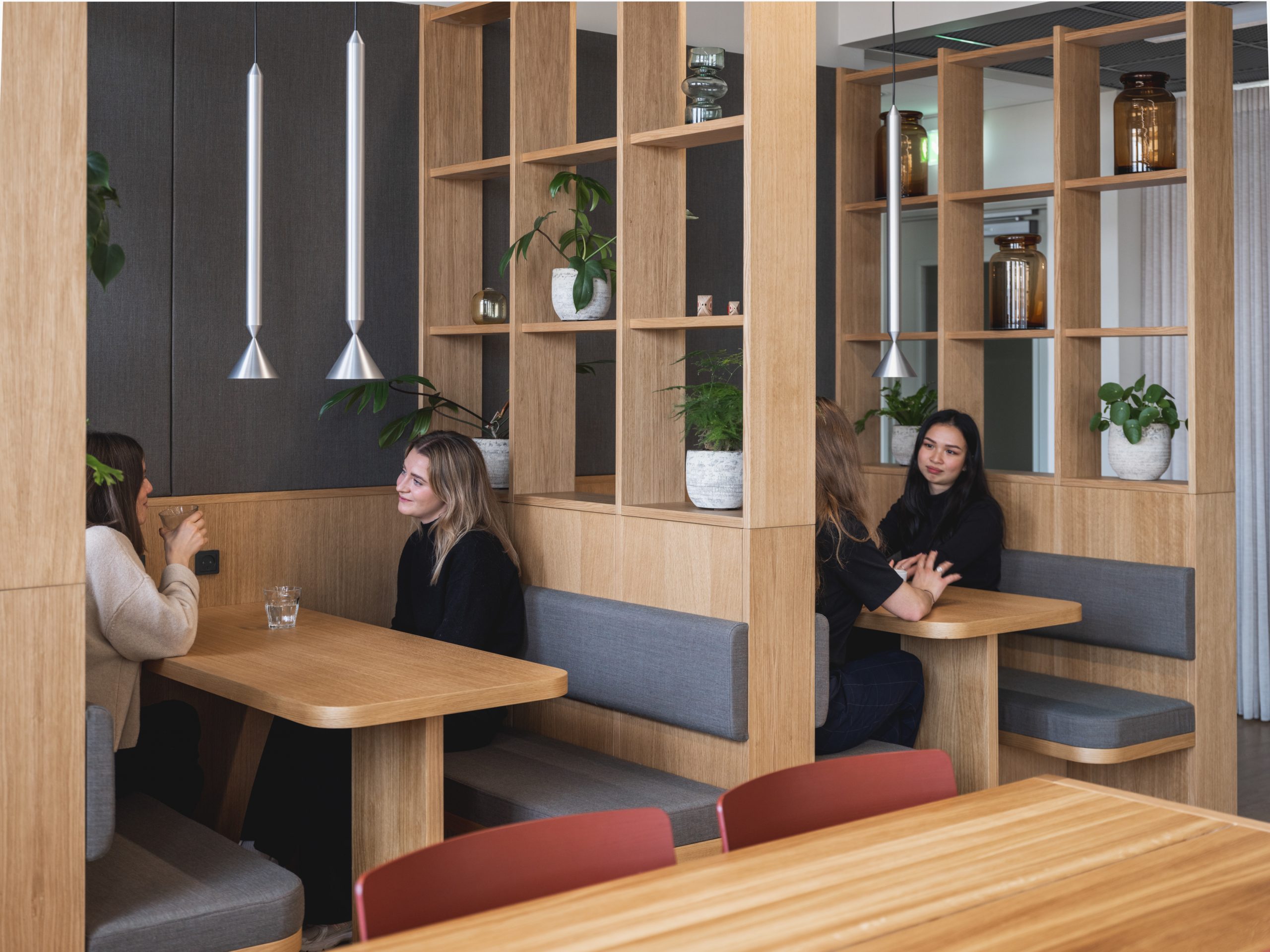
Materiality, Texture and Brilliance
Depending on the interior material and colour, the perceived light temperature changes, so materiality should be taken into account. Neutral color environments reflect the same light color as perceived. In high-contrast and colorful environments, the color of the light is perceived differently. For example, in warm (timber, or reddish tones) environment the light color is perceived as warmer.
Brilliance is an effect that allows us to recognize the texture and depth of a material, adding contrast and richness, which is important for visual impression. Brilliance can only be achieved with direct lighting that makes materials and colors look more appealing.
- Use a balanced mix of direct luminaires that help achieve brilliance, and indirect light sources
- Diffused lighting in isolation can reduce perceived quality of materials, minimize contrast, and contribute to depression and low concentration ratios, therefore additions of direct and focused light fixtures should be considered.
- To avoid glare, surfaces should not be too reflective.
Planing Principles
Luminaire arrangement must be harmonized with the architectural concept, being aware of distances between light Fixtures and construction obstructions (Walls, Beams, columns) and avoiding creating hot spots on surfaces.
Maintain a minimum 1:3 Ratio between workplace and ambient brightness.
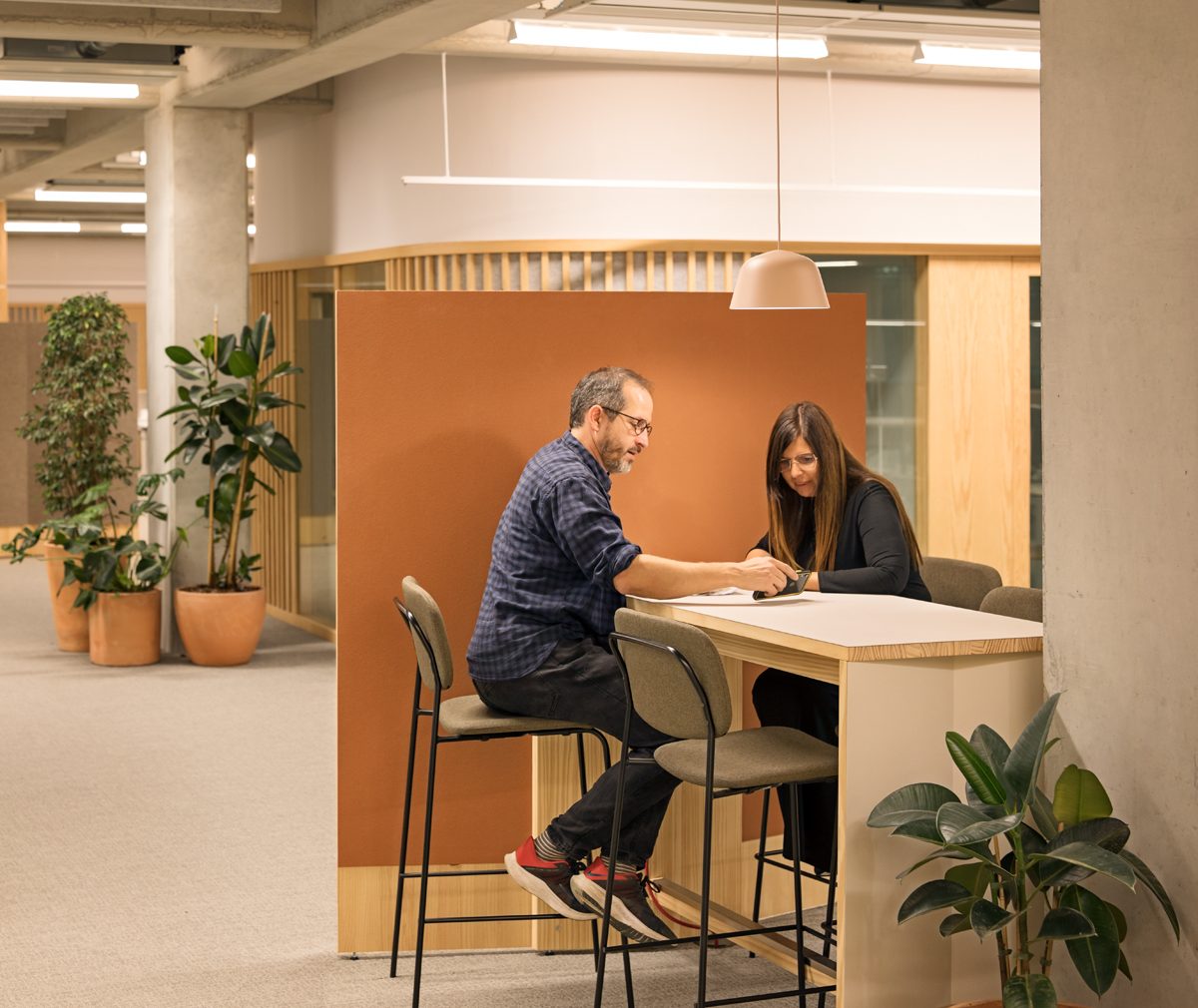
Open work and semi-open work areas
How does light support concentrated work? Using differentiated lighting supports productive work – combination of visually comfortable general lighting and flexible task lighting for individual workstations. Accent lighting creates focus and emphasizes specific areas.
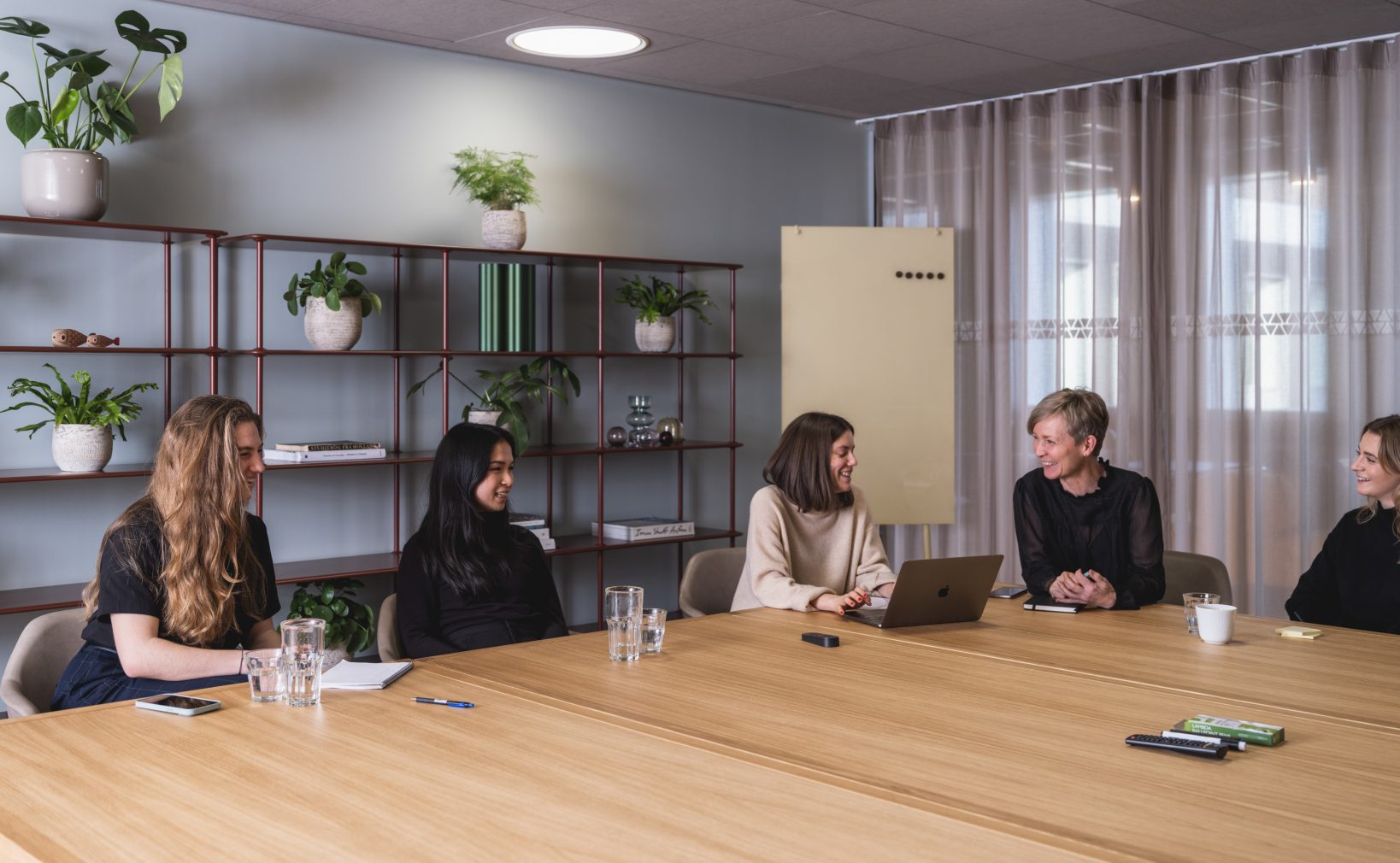
Enclosed Work and Meeting Areas
How does light create an optimum backdrop for all types of discussions? Open communication is supported by harmoniously lighting table surfaces and people’s faces with overhead fixtures; supplemented by uniformly spaced lighting along the walls that creates a welcoming and balanced atmosphere. Balanced contrast is the element allowing for perfect VC meetings. Avoid fixtures that cause glare.
Follow AV Standards to ensure optimum performance for video conferencing. Pay attention to background colours and lighting. If using pendant lighting, ensure there is no interference with AV equipment (cameras, projectors, screens)
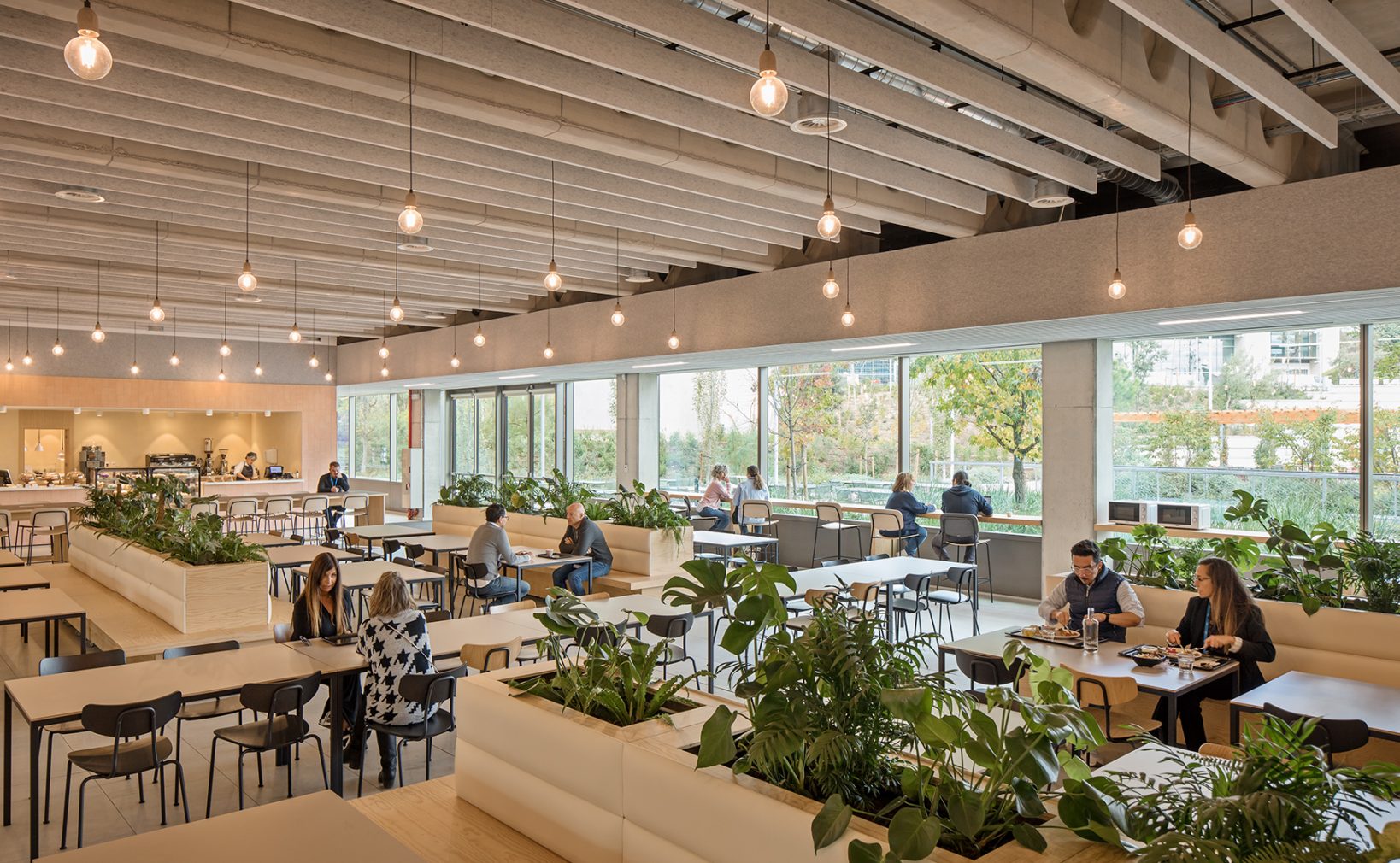
Regeneration Areas
How does light foster a creative atmosphere? Balanced contrast and stimulating accent lighting to emphasize interior details encourages creativity. Accent lights create focal points and define zones for reflection or creative discussions. Use uniform flexible general lighting such as: recessed ceiling luminaires; adjustable ceiling track lighting systems; architectural or decorative pendant luminaires.
Reception and Entrances
How does light make a space inviting?
Entrance and reception areas are the first opportunities for companies to present their identity. Overhead lighting is used to create a welcoming, inviting atmosphere in the general area and an accent light to emphasize important elements for visitors, such as a reception desk. Wall washing luminaires can be used along the perimeter of the room. Avoid overly dramatic lighting effects, or incorporating built-in lighting into the reception desk, keep it minimal. Consider materiality and color scheme, as well as availability of natural light when choosing light color temperature.

Home office
How do we achieve optimum lighting for working at home?
- If possible, position the desk to the side and slightly behind a window.
- Ensure a balanced illumination; avoid high contrasts between tabletop and ambient brightness
- Use consistent light color temperature within a given space, 3000K is recommended for a warmer evening atmosphere
- To avoid glare and high light intensities, use a shading system
- For best video conference experience avoid excessive backlighting, as well as direct narrow light beam overhead that casts shadows on the face
Don’t
-
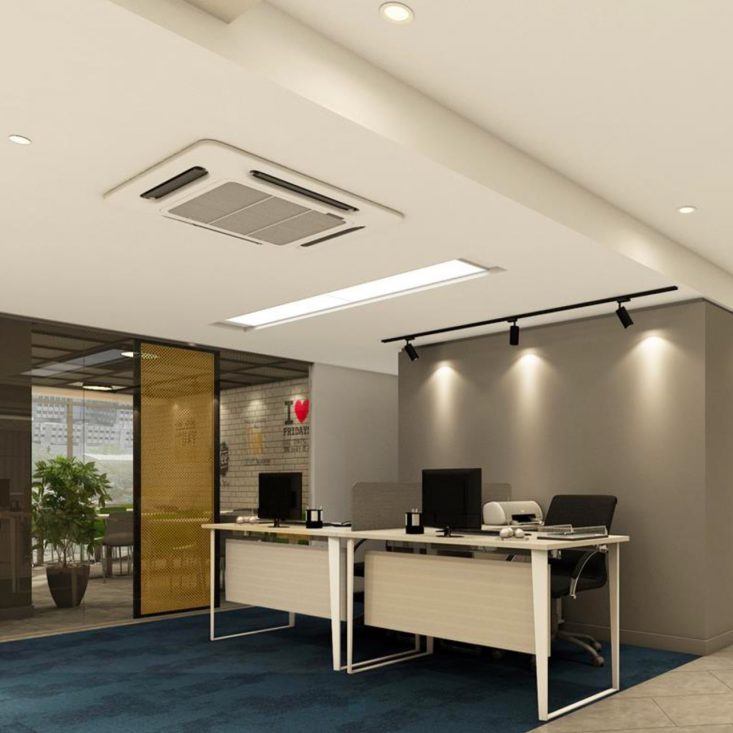
Avoid redundancy, or lighting creating hot spots on surfaces.
-

Avoid lighting the workspace exclusively with floor lamps, leaving a dark or patchy ceiling plane created but local indirect lighting
-
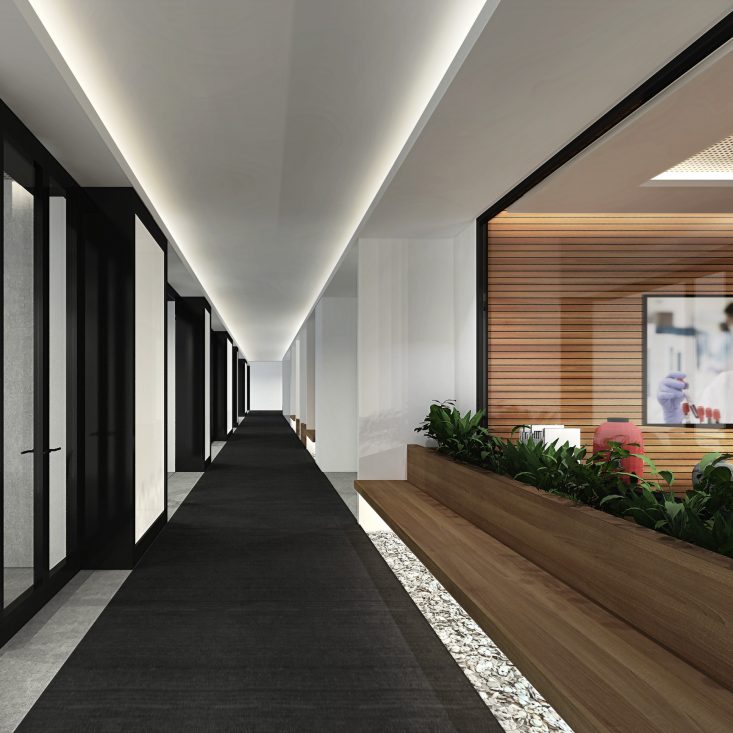
Avoid excessive use of cove, indirect lighting to rooms, circulation or furniture.
Key to Creating atmospheres
- Employ appropriate lighting solutions based on the use and functionality of each space.
- Stick to a clear concept for fixture typologies and formal language, a system/family of fixtures with various functions.
- Create a rich atmosphere through diversity by mixing different types of lighting; avoid a single solution that fits all.
- Select appropriate light colour temperature for each space based on function and considering natural light and finish colours.
- All lighting should be a minimum of 80% efficiency LED, in compliance with Roche K18 Directive.
- Ensure a balanced illumination effect by combining direct and diffused lighting and using appropriate light intensity.
